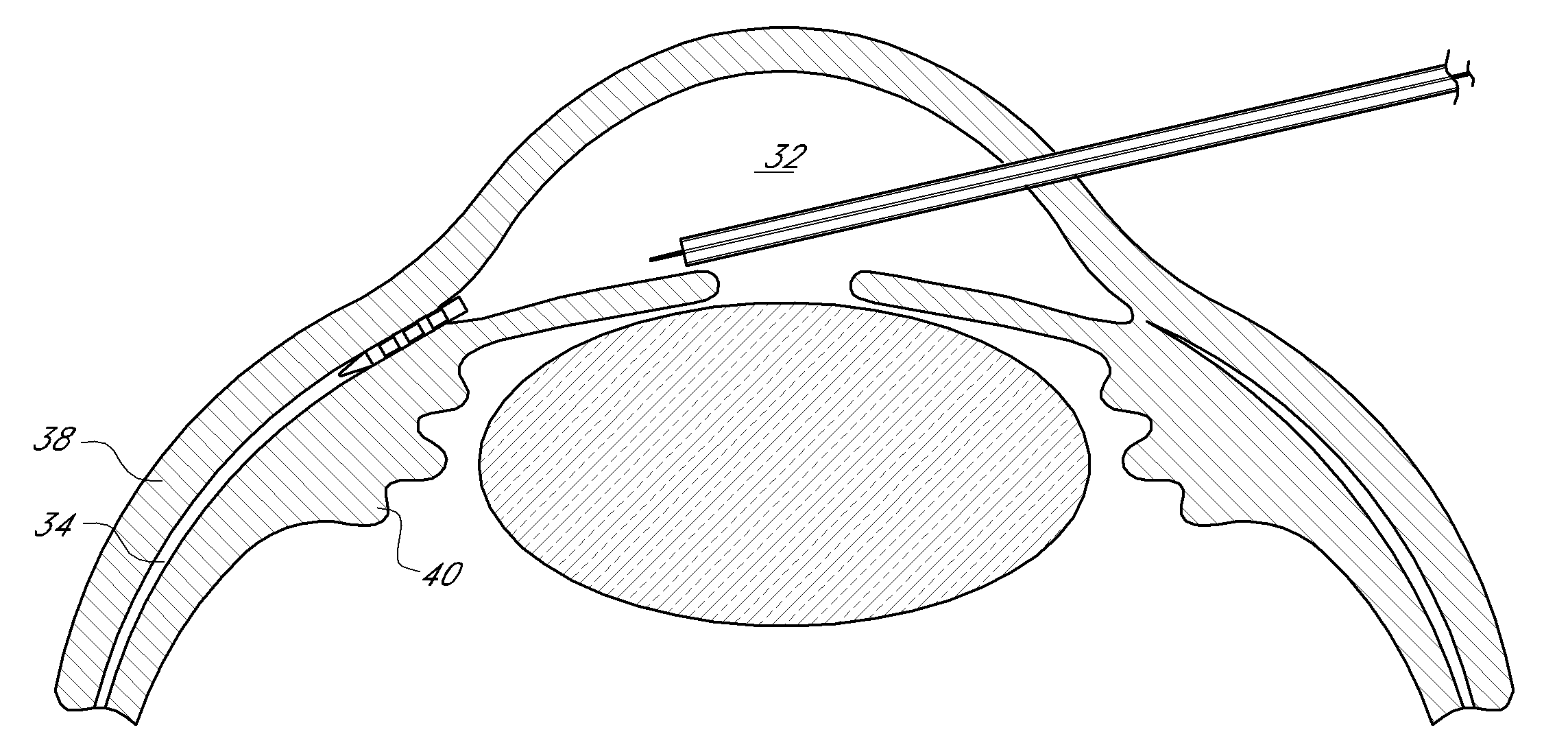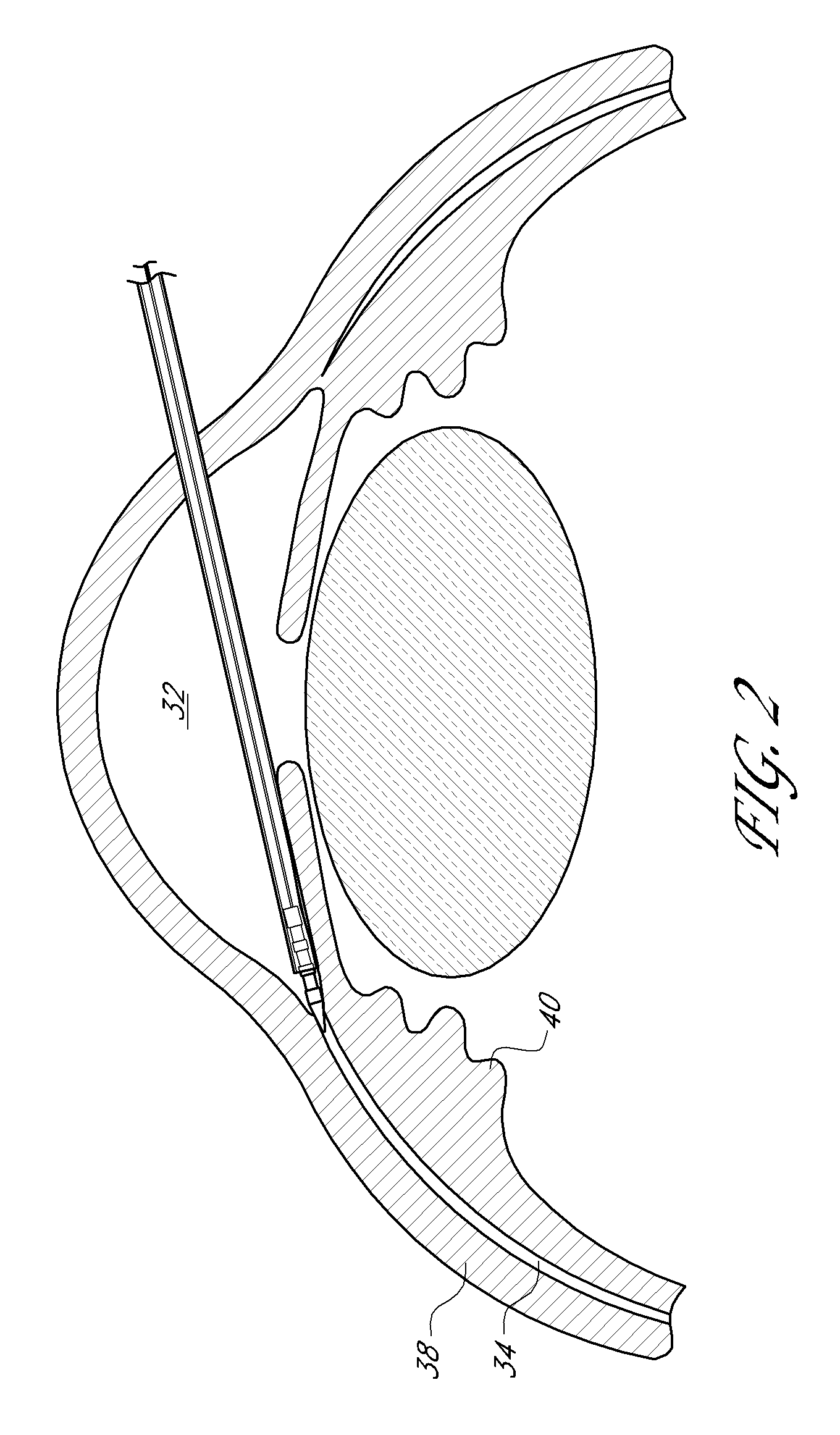Uveoscleral shunt and methods for implanting same
a uveoscleral shunt and uveoscleral shunt technology, applied in the field of reducing intraocular pressure within, can solve the problems of large blindness if untreated, patients may suffer substantial, and sometimes associated with significant side effects of drug therapies for glaucoma, and achieve the effect of small cross section
- Summary
- Abstract
- Description
- Claims
- Application Information
AI Technical Summary
Benefits of technology
Problems solved by technology
Method used
Image
Examples
Embodiment Construction
[0079]An ophthalmic implant system is provided that comprises a shunt and a delivery instrument for implanting the shunt. While this and other systems and associated methods are described herein in connection with glaucoma treatment, the disclosed systems and methods can be used to treat other types of ocular disorders in addition to glaucoma.
[0080]The shunt, following implantation at an implantation site, drains fluid from the anterior chamber into a physiologic outflow space. In some embodiments, the shunt is configured to provide a fluid flow path for draining aqueous humor from the anterior chamber of an eye to the uveoscleral outflow pathway to reduce intraocular pressure. In some embodiments, an instrument is provided for delivering and / or implanting the drainage shunt ab interno in an eye to divert aqueous humor from the anterior chamber to the uveoscleral outflow pathway. In some embodiments, a method is provided for implanting a drainage shunt ab interno in an eye to divert...
PUM
 Login to View More
Login to View More Abstract
Description
Claims
Application Information
 Login to View More
Login to View More - R&D
- Intellectual Property
- Life Sciences
- Materials
- Tech Scout
- Unparalleled Data Quality
- Higher Quality Content
- 60% Fewer Hallucinations
Browse by: Latest US Patents, China's latest patents, Technical Efficacy Thesaurus, Application Domain, Technology Topic, Popular Technical Reports.
© 2025 PatSnap. All rights reserved.Legal|Privacy policy|Modern Slavery Act Transparency Statement|Sitemap|About US| Contact US: help@patsnap.com



